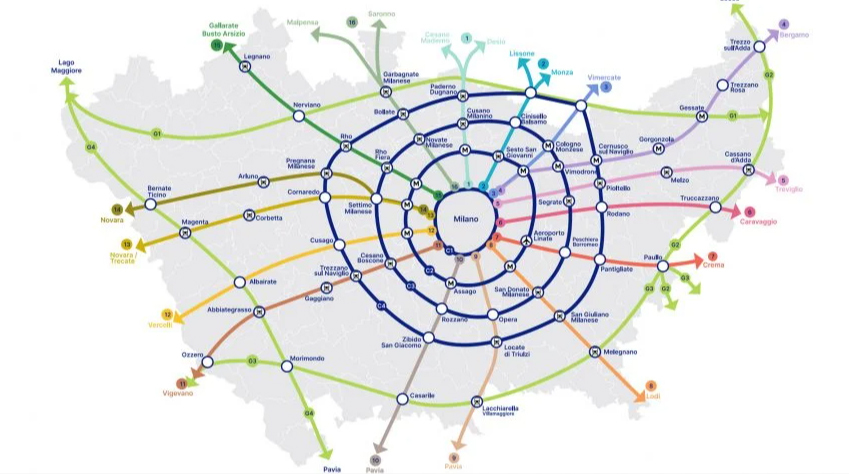This article was originally published by Christopher Carey on Cities Today, the leading news platform on urban mobility and innovation, reaching an international audience of city leaders. For the latest updates, follow Cities Today on Twitter, Facebook, LinkedIn, Instagram, and YouTube, or sign up for Cities Today News.
Milan is set to create 750 kilometers of dedicated cycle paths by 2035 as part of plans to cut pollution and boost sustainable travel.
The Cambio plan — adopted in November last year by the Italian city’s Metropolitan Council — is set to launch this summer, with a budget of €250 million (US$282 million).
The web of cycle paths — which consist of four ring roads, four greenways, and 16 radiating lines — will connect the city core to its suburbs and surrounding municipalities.
When completed, the network will exceed the 680 kilometers of cycle paths planned by Paris — currently one of Europe’s largest bicycle infrastructure projects.
“Over the next few years we will invest around €250 million to create a capillary network of cycle paths that will integrate with the other existing modes of travel,” said Milan Metropolitan Council’s Delegate Councillor for Mobility, Beatrice Uguccioni.
“The aim is to bridge the gap — this will lead to less emissions and traffic, but also more road safety, as cyclists and motorists will not have to share the same road space.
Primary mode


Reaching from Milan’s city centre into the surrounding countryside, the ambition is to make cycling the first and easiest choice for getting around the Metropolitan City of Milan — an area that includes both the city and its suburbs.
The city wants cycling to become the primary mode of transport for at least 20 percent of its residents by 2035, and will seek to ensure that 80 percent of homes are within one kilometer of a fully protected cycle route.
“This is a unique project in Italy, because it is the first to be accompanied by an organic strategic document,” added Uguccioni.
“Our will is to surround the metropolitan city with a capillary network of cycle paths that connect the capital city with the entire metropolitan area, replicating what we have already done with optical fibre.”
The paths will also feature state-of-the-art infrastructure, including low-impact motion-sensor lighting, digital displays, and a network of fibre optic cables, as well as dedicated bike parking stations.
During the pandemic, Milan reallocated 35 kilometers of city centre road space for cycle lanes, created new and widened pavements, designated streets as a priority for pedestrians and cyclists and imposed a speed limit of 30 kilometers per hour.
